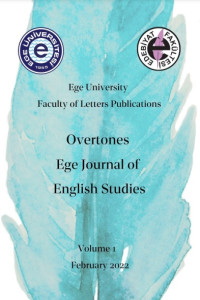Abstract
References
- Bhabha, Homi K. The Location of Culture. London: Routledge, 1994.
- Coetzee, John Maxwell. Waiting For The Barbarians. New York: Penguin Books, 1999.
- Fanon, Frantz. The Wretched of the Earth. Trans. Constance Farrington. New York: Grove Press, 1963.
- Ghosh, Amitav. Sea of Poppies. Penguin Groups, 2009.
- Gramsci, Antonio. Subaltern Social Groups: A Critical Edition of Prison Notebook 25. Ed. Marcus E. Green and
- Joseph A. Buttigieg. New York: Columbia UP, 2021.
- Guha, Ranajit, Ed. “Chandra’s Death.” in Subaltern Studies V: Writings on South Asian History and Society. Oxford: Oxford UP, 1987.
- Hosken, Fran. “The Violence of Power: The Genital Mutilation of Females.” Heresies 2.2. (1978): 28-35. <http://heresiesfilmproject.org/wp-content/uploads/2011/10/heresies6.pdf>.
- Newman, Cathy. “A Life Revealed.” National Geographic. 1 April 2002. <https://www.nationalgeographic.com/magazine/article/afghan-girl-revealed>. Accessed 25 June 2021.
- Said, Edward. Culture and Imperialism. New York: Vintage Books, 1994.
- ———. Orientalism. London: Penguin Books, 1991.
- Spivak, Gayatri Chakravorty. “Can the Subaltern Speak?” in Marxism and the Interpretation of Culture. Eds. C. Nelson and L. Grossberg. Urbana: U of Illinois P, 1988. <http://abahlali.org/files/Can_the_subaltern_speak.pdf>.
Abstract
Oppression against the subaltern women has always been a significant issue. They have not only
struggled through many challenges caused by imperial powers but also suffered from the traditional, religious
and social norms imposed by their own patriarchy. Although it is considered that the West is the only saviour for
the East, it has never become true as it has been nothing but devastation, poverty, identity struggle and a
challenging life in refugee camps. In order to avoid misinterpretation of the subaltern women, it is now up to
intellectuals, writers and journalists to make their voices heard and reveal all the facts about them. In this sense,
Coetzee and Ghosh draw a perfect picture and become the voice of the subaltern women under the domination of
their own patriarchy and imperial powers all around the world. They, in a way, tell the story of millions of
subaltern women like Sharbat Gula, who was objectified both by her patriarchal society and by the West to
justify its violent acts upon the East. Intertwined between colonists and patriarchy the subaltern is always
subaltern and it is almost impossible for them to express themselves as they do not have autonomy and are not
independent from dominant foreign groups. Thus, the aim of this study is to discuss how the subalternity is
pictured through the female portraits in the novel Waiting For The Barbarians by John Maxwell Coetzee and
Sea of Poppies by Amitav Ghosh along with the real life story of the Afghan Girl, Sharbat Gula, who was
photographed by Steve McCurry.
Keywords
Postcolonialism Subaltern Spivak Waiting For the Barbarians Sea of Poppies The Afghan Girl Orientalism Guha
References
- Bhabha, Homi K. The Location of Culture. London: Routledge, 1994.
- Coetzee, John Maxwell. Waiting For The Barbarians. New York: Penguin Books, 1999.
- Fanon, Frantz. The Wretched of the Earth. Trans. Constance Farrington. New York: Grove Press, 1963.
- Ghosh, Amitav. Sea of Poppies. Penguin Groups, 2009.
- Gramsci, Antonio. Subaltern Social Groups: A Critical Edition of Prison Notebook 25. Ed. Marcus E. Green and
- Joseph A. Buttigieg. New York: Columbia UP, 2021.
- Guha, Ranajit, Ed. “Chandra’s Death.” in Subaltern Studies V: Writings on South Asian History and Society. Oxford: Oxford UP, 1987.
- Hosken, Fran. “The Violence of Power: The Genital Mutilation of Females.” Heresies 2.2. (1978): 28-35. <http://heresiesfilmproject.org/wp-content/uploads/2011/10/heresies6.pdf>.
- Newman, Cathy. “A Life Revealed.” National Geographic. 1 April 2002. <https://www.nationalgeographic.com/magazine/article/afghan-girl-revealed>. Accessed 25 June 2021.
- Said, Edward. Culture and Imperialism. New York: Vintage Books, 1994.
- ———. Orientalism. London: Penguin Books, 1991.
- Spivak, Gayatri Chakravorty. “Can the Subaltern Speak?” in Marxism and the Interpretation of Culture. Eds. C. Nelson and L. Grossberg. Urbana: U of Illinois P, 1988. <http://abahlali.org/files/Can_the_subaltern_speak.pdf>.
Details
| Primary Language | English |
|---|---|
| Subjects | British and Irish Language, Literature and Culture, Literary Studies, Literary Theory |
| Journal Section | Research Articles |
| Authors | |
| Publication Date | February 21, 2022 |
| Submission Date | September 14, 2021 |
| Published in Issue | Year 2022 Issue: 1 |


